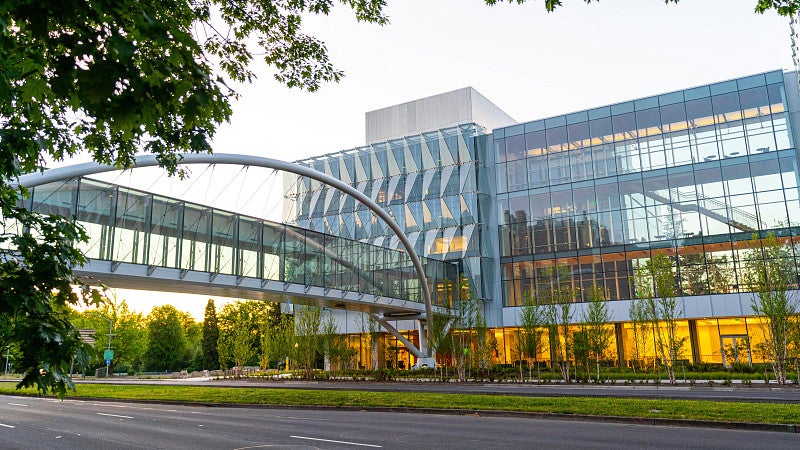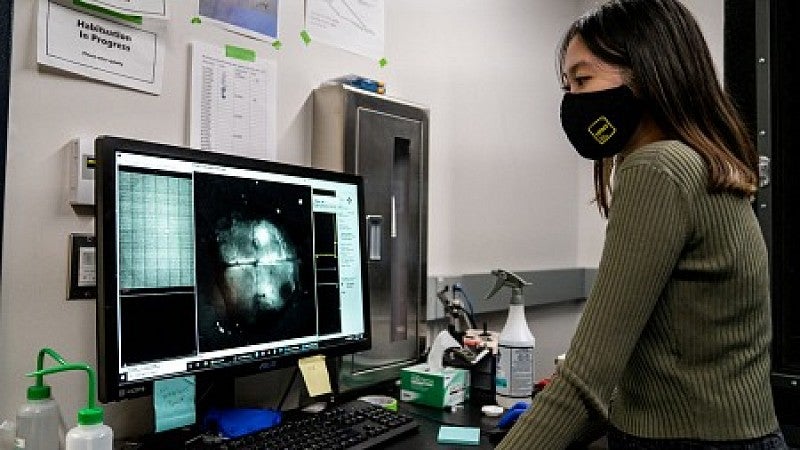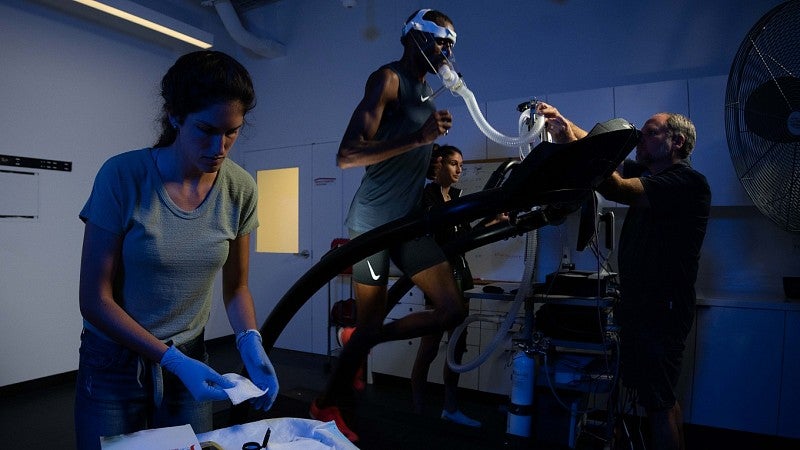Build bridges with Human Physiology
Studying human physiology creates natural bridges to medicine, engineering, product development and testing, and sport and wellness that give rise to exciting interdisciplinary projects at UO. We have collaborations with multiple physicians and clinical researchers, corporate partners, and government agencies that make use of our outstanding research facilities.
Affiliated Centers and Institutes

Phil and Penny Knight Campus for Accelerating Scientific Impact
The Phil and Penny Knight Campus for Accelerating Scientific Impact is an ambitious initiative to fast-track scientific discoveries into innovations that improve the quality of life for people in Oregon, the nation, and the world. The campus creates the intellectual infrastructure to establish Oregon as a center for both research and development, making Oregon a place where companies can start up, grow, and stay.

Institute of Neuroscience
The Institute of Neuroscience (ION) is a group of biologists, psychologists, mathematicians, and human physiologists at the University of Oregon that has pooled its expertise to tackle fundamental questions in neuroscience. Students enrolled in our PhD program come away with the broad conceptual and technical skills necessary to be an independent and successful scientist.

Wu Tsai Human Performance Alliance at Oregon
The Human Performance Alliance weaves together three synergistic scientific programs to accelerate high-impact advances in human performance: scientific moonshots, innovation hubs, and agility projects. Involving collaborators from multiple disciplines and institutions around the country, these programs provide both breadth and depth in exploring and applying the fundamentals of peak performance to human health and well-being.
Interdisciplinary Student Research Profiles
Apoorva Karekal, Human Physiology PhD program, 2025
EEG in Parkinson's disease
Apoorva is leading a project examining the reliability of potential electrencephalography (EEG) derived biomarkers in Parkinson's disease. She and Assistant Professor Nicki Swann of the Motor Neuroscience of Health and Disease Lab are collaborating with OHSU's neurology department to recruit and clinically evaluate patients with Parkinson's disease. These patients will come to the UO for multiple visits where Apoorva will place caps on their heads with electrodes attached to record EEG. From this, she hopes to establish the reliability of electrophysiological biomarkers for Parkinson’s which could be used for diagnosis or monitoring of patients.
Read Dr. Swann's published research, Characteristics of Waveform Shape in Parkinson’s Disease Detected with Scalp Electroencephalography.
Jessica Atencio and Emma Reed, Human Physiology PhD program, 2024
Environmental chamber studies with industry partners
Jessica and Emma have been testing the thermal properties of clothing ensembles and comfort factors of cold weather ski outfits for Columbia Sportswear in preparation for the Winter Olympics in Beijing. Their work is guided by professors Chris Minson and John Halliwill and is taking place at the Bowerman Sports Science Center.
Aaron Betts, Human Physiology PhD program, 2024
Mechanical and gravitational countermeasures to ocular changes during strict head-down tilt bedrest
Optic disc edema develops in astronauts during spaceflight and is a hallmark sign of Spaceflight Associated Neuro-ocular Syndrome (SANS). The reasons why SANS occurs in some, but not all astronauts or bedrest subjects is unknown, but we believe that we are at the cusp of understanding an important factor that could explain the variability and the answer has been literally hiding in the dark: poor sleep. The proposed study will quantify the relationship between total sleep time and the development of retinal thickening and optic disc edema quantified from optical coherence tomography images from 1) data obtained on the International Space Station, and 2) during strict head down tilt bedrest without and with three countermeasures.
Aaron is conducting this research with Professor Andrew Lovering’s Cardiopulmonary and respiratory physiology lab at the UO; NASA’s Johnson Space Center, Houston, TX; and German Aerospace Center :envihab, Köln, Germany.
Read Dr. Lovering's published research, Unchanged cerebrovascular CO 2 reactivity and hypercapnic ventilatory response during strict head-down tilt bed rest in a mild hypercapnic environment.

